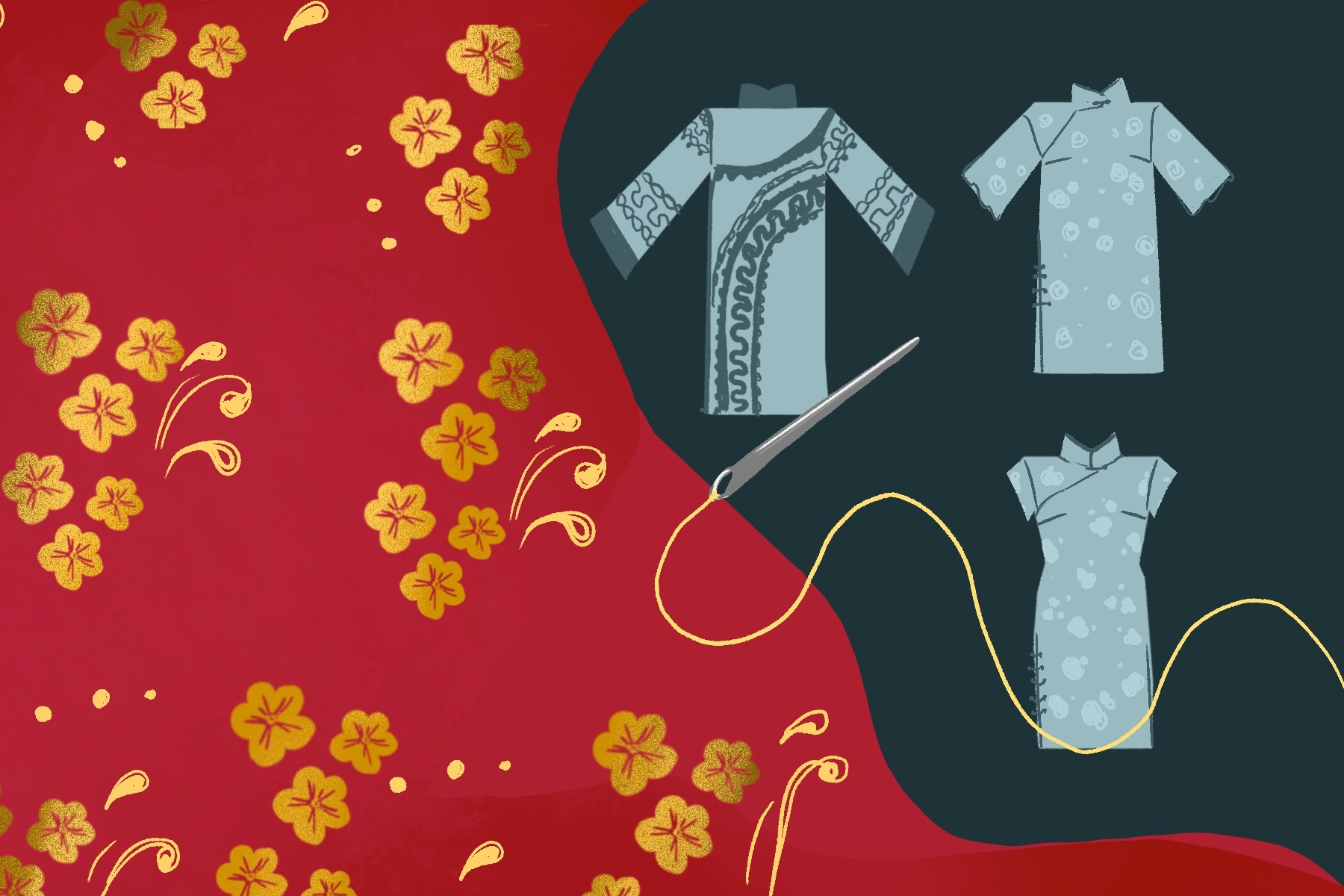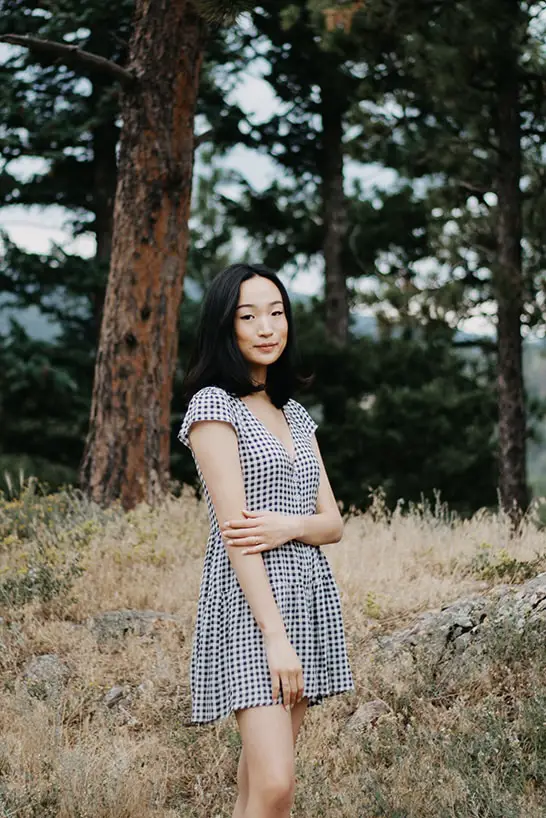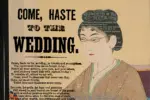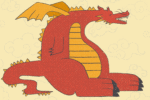A qipao (旗袍), also known as a cheongsam, is a fitted dress that came from Shanghai in the 1920s. Shortly after its introduction, the style saw a meteoric rise in popularity and was soon worn by girls of all social classes and economic standings. A qipao is not just a dress, though. Its evolution reflects the standing of Chinese women throughout history.
The overthrow of the Qing dynasty in 1912 began the pushback against traditional societal values in Chinese society. Beginning in the 1910s and 1920s, intellectuals began to advocate for a more equal society like that of the West, especially for women. Among other things, foot binding was outlawed the same year as the end of the Qing dynasty. Foot binding was a painful practice in which women’s feet were bound so they would be as small and “feminine” as possible, and it was a symbol of status. The practice often, if not always, led to lifelong pain and difficulty walking. Women were also now being encouraged to attend school and learn alongside men.
Encouraged and ushered into a new era of egalitarianism, women in Shanghai adopted a form of clothing, the changpao, from men. Changpaos, or changshans, were essentially a long tunic or robe. This adoption of a more androgynous style marked the beginning of the qipao and is considered its male equivalent. A political statement, it represented equality among men and women.
The first form of the qipao looks very different from how it is known today though. It had sleeves similar to changpaos and did not hug the body. As the style became more and more widespread, the material transitioned from traditional silk to cheaper textiles that could be more easily mass-produced.
It was during the 1930s and 1940s that the qipao adopted its modern form. No longer was it a political statement — rather, it was the celebration of the femininity of women. As the donning of a qipao became more normalized within everyday life, the dress became tighter, and shed the sleeves. Traditionally fastened with pankou or “frog knots,” an ornate loop tied from one piece of material and a “button” made from knotting a single piece of material, the qipao allowed women to experiment with different fastenings as well as collars. The mandarin collar, as it is called in the West, is a collar that rises 3-4” above the neckline of the dress and is a signature on a qipao. The modern rendition also features a slit up to the knee or thigh on the side, one that was considered daring when it first came about.
The rise of the Communist government in 1949, though, led to the qipao’s disappearance. Considered bourgeois, which conflicted with the beliefs of the Communist system, the qipao was no longer allowed to be worn. In fact, in Shanghai, where the qipao originated, the streets were patrolled to ensure that no one wore the dress, or other “eccentric” clothing, anymore.
Even so, women in 1950s Hong Kong, still a British colony at the time, continued to wear the dress. Although the dress was seen as everyday wear, under the influence of Western fashion, women began to wear it with heels, a clutch and gloves.
Qipaos came back to the rest of mainland China in the 1980s but was now seen as more formal wear. Nowadays, the qipao is worn most commonly for weddings or other traditional and formal ceremonies. For weddings, a qipao must always be red, an auspicious and lucky color in Chinese culture.
Its disappearance from everyday wear can be partially explained by the way that qipaos are made. Traditional qipaos must be made by hand to best fit a customer. Extensive body measurements are taken, and then drafts are made of the dress. Nearly everything is done by hand, from the fastenings to the extensive embroidering on the qipao. Making these dresses aren’t cheap, either. Because the dresses are traditionally made from silk, there are few people that still know how to make traditional qipaos — and they are certainly charging for it. The making of a qipao is an extensive process, one that, from design to tailoring, includes nearly 200 steps. One qipao can take up to a month to make.
Qipaos may be more rarely seen in China than they were before, but the dress has established a global influence. In the 1990s, “Mall shops like Delia’s to high-fashion runways [were] selling the signature mandarin collars.” Celebrities, including the likes of Kate Moss and Claire Danes, wore them on the red carpet. Brands like Zara and Reformation have sold “oriental” dresses, appropriating and often oversexualizing the dress silhouette. Western brands that have made their own versions of the item of clothing have often made the dress shorter and more overtly sexual, which has only further perpetuated the harmful stereotypes of the geisha and the “exotic Oriental.”
The qipao has certainly been known by many forms and in many places, but one thing is clear: Its beginnings symbolized the rise of women in Chinese society. More than a piece of clothing, the qipao is a celebration of Chinese women.

















